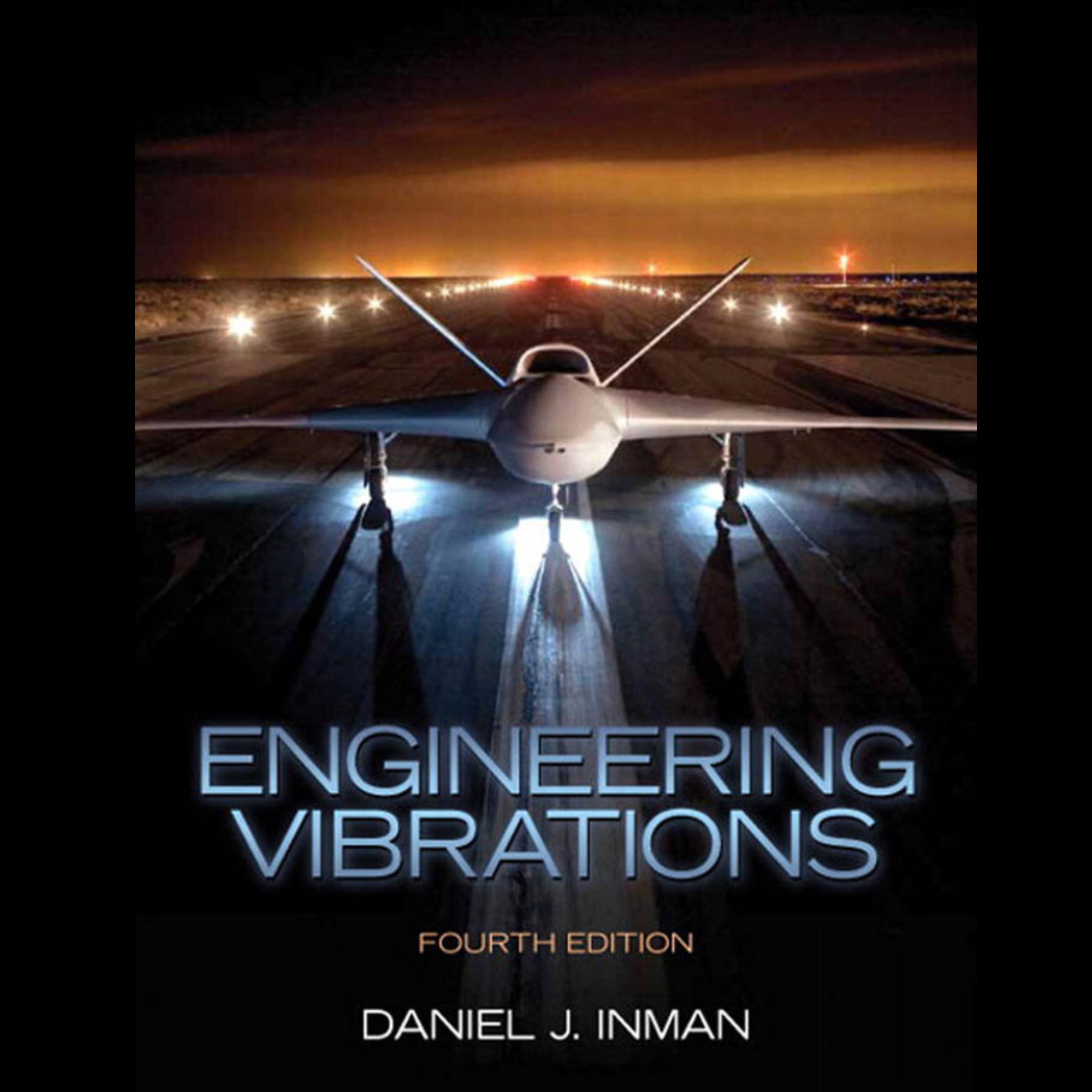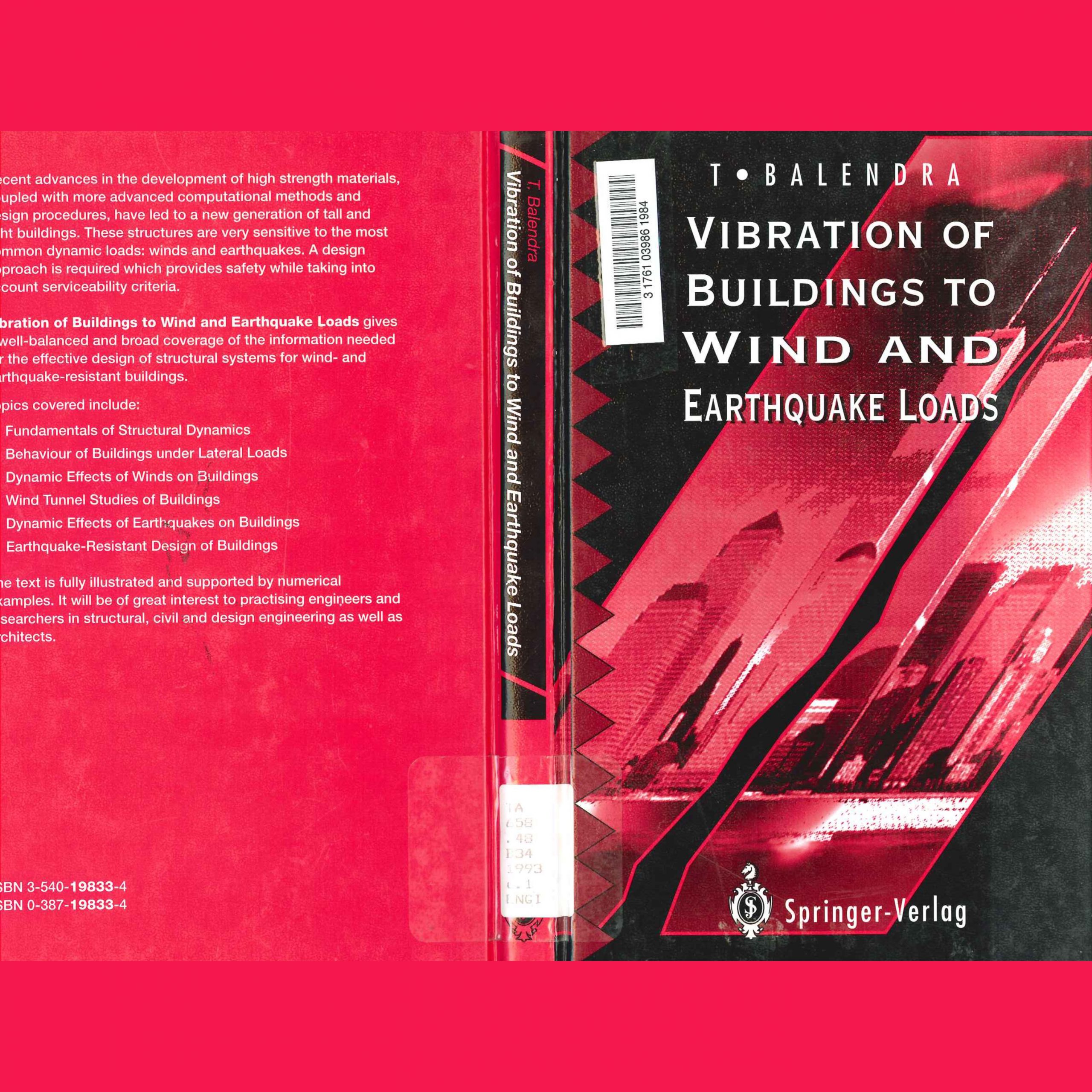توضیحات
کتاب ارتعاشات مکانیکی
کتاب ارتعاشات رشته مهندسی مکانیک
شامل بیش از 30 کتاب ارتعاشات مکانیکی به زبان اصلی
درس ارتعاشات مکانیکی یکی از دروس پایه ای و مهم در دوره کارشناسی مهندسی مکانیک می باشد. کتاب های متعدد فراوانی در زمینه این درس توسط مولفین خارجی و داخلی به رشته تحریر در آمده است که هم حاوی مطالب کلاسیک و مقدماتی هستند که در دوره کارشناسی مطرح می باشند و هم فصل هایی از این کتابها به مباحث پیشرفته تر نظیر ارتعاشات سیستم های پیوسته اختصاص دارند که عموما این مباحث به شکل جدی در دوره کارشناسی ارشد مورد مطالعه قرار می گیرند.
ارتعاشات مکانیکی ( Mechanical Vibration) عبارت است از مطالعه رفتار سینماتیکی و سینتیکی سامانههای نوسانی جهت بدست آوردن پاسخ زمانی سامانه. تمام اجسامی که جرم و کشسانی دارند میتوانند نوسان کنند. از این رو، همه ماشینها و سازههای صنعتی تا اندازهای ارتعاش میکنند که این رفتار آنها در طراحی باید در نظر گرفته شود.
اجزاء سامانههای ارتعاشی
در هر سامانهای که ارتعاشات مکانیکی دارد انرژی جنبشی و انرژی پتانسیل دائماً در حال تبدیل به یکدیگر هستند. اجزاء سامانههای ارتعاشی موارد زیر هستند:
۱. اجزاء الاستیک که انرژی پتانسیل را در خود ذخیره میکنند.
۲. اجزاء اینرسی که انرژی جنبشی را در خود ذخیره میکنند.
۳. اجزاء میرایی که عامل استهلاک انرژی هستند.
تقسیمبندی ارتعاشات مکانیکی
ارتعاشات مکانیکی را میتوان بر اساس عوامل مختلف دستهبندی کرد:
۱. الف) آزاد (Free Vibration) که در آن بارگذاری خارجی وجود ندارد و سامانه به دلیل شرایط اولیه آن ارتعاش میکند.
ب) اجباری (Forced Vibration) که در آن سامانه تحت بارگذاری خارجی است.
۲. الف) نامیرا (Undamped Vibration) که در آن انرژی سامانه به مرور زمان از بین نرفته و سامانه پیوسته ارتعاش میکند.
ب) میرا (Damped Vibration)که در آن انرژی سامانه به مرور زمان از بین رفته و سامانه از ارتعاش باز میایستد.
۳. الف) خطی (Linear Vibration) که در آن المانها رفتار خطی داشته و رفتار سامانه از معادله دیفرانسیل خطی پیروی میکند. همچنین اصل جمع آثار در این سامانهها صادق بوده و دامنه ارتعاش معمولاً کم است.
ب) غیرخطی (Nonlinear Vibration) که در آن المانها رفتار غیرخطی داشته و رفتار سامانه از معادله دیفرانسیل غیرخطی پیروی میکند. همچنین دامنه ارتعاش این سامانهها معمولاً زیاد است.
۴. الف) منظم که در آن مقدار تحریک خارجی بر سامانه در هر لحظه معلوم است.
ب) نامنظم (اتفاقی) که در آن مقدار تحریک خارجی بر سامانه در هر لحظه معلوم نیست.
اثرات ارتعاشات مکانیکی
ارتعاشات مکانیکی گاهی اثرات مطلوب و مساعد ما دارند (مانند ویبراتورها) و گاهی اثرات مخرب ، نامطلوب دارند. پدیده خستگی، تولید سر و صدا، شل شدن اتصالات و کاهش صافی سطح طی عملیات ماشینکاری تعدادی از نامطلوبترین اثرات ارتعاشات هستند.
کاربردهای ارتعاشات مکانیکی
- بررسی رفتار خودروها (سامانه تعلیق)
- بررسی زلزله
- بررسی صوت و آکوستیک
- بررسی ارتعاشات ماشینهای ابزار (پدیده Chatter)
- بررسی ارتعاشات ماشینهای دوار (پمپ، توربین و…)
مباحث اصلی ارتعاشات مکانیکی
- حرکت نوسانی
- ارتعاشات آزاد
- ارتعاشات اجباری
- ارتعاشات گذرا
- سامانههای دو درجه آزادی
- سرعت بحرانی محورهای دوار
- سامانههای چند درجه آزادی
- کاربرد ارتعاشات
- جداسازی ارتعاشات
Engineering Vibration
Preface
Acknowledgements
General notation
1 Introduction
1.1 The causes and effects of structural vibration
1.2 The reduction of structural vibration
1.3 The analysis of structural vibration
1.3.1 Stage I. The mathematical model
1.3.1.1 The model parameters
1.3.2 Stage II. The equations of motion
1.3.3 Stage III. Response to specific excitation
1.4 Outline of the text
2 The vibration of structures with one degree of freedom
2.1 Free undamped vibration
2.1.1 Translation vibration
2.1.1.1 Springs connected in series
2.1.1.2 Springs connected in parallel
2.1.2 Torsional vibration
2.1.3 Non-linear spring elements
2.1.4 Energy methods for analysis
2.1.4.1 The vibration of systems with heavy springs
2.1.4.2 Transverse vibration of beams
2.1.5 The stability of vibrating structures
2.2 Free damped vibration
2.2.1 Vibration with viscous damping
2.2.1.1 Logarithm decrement A
2.2.2 Vibration with Coulomb (dry friction) damping
2.2.3 Vibration with combined viscous and Coulomb damping
2.2.4 Vibration with hysteretic damping
2.2.5 Complex stiffness
2.2.6 Energy dissipated by damping
2.3 Forced vibration
2.3.1 Response of a viscous damped structure to a simple
harmonic exciting force with constant amplitude
2.3.2 Response of a viscous damped structure supported on
a foundation subjected to harmonic vibration
2.3.2.1 Vibration isolation
2.3.3 Response of a Coulomb damped structure to a simple
harmonic exciting force with constant amplitude
2.3.4 Response of a hysteretically damped structure to a simple
harmonic exciting force with constant amplitude
2.3.5 Response of a structure to a suddenly applied force
2.3.6 Shock excitation
2.3.7 Wind- or current-excited oscillation
2.3.8 Harmonic analysis
2.3.9 Random vibration
2.3.9.1 Probability distribution
2.3.9.2 Random processes
2.3.9.3 Spectral density
2.3.10 The measurement of vibration
3 The vibration of structures with more than one degree of freedom
3.1 The vibration of structures with two degrees of freedom
3.1.1 Free vibration of an undamped structure
3.1.1.1 Free motion
3.1.2 Coordinate coupling
3.1.3 Forced vibration
3.1.4 Structure with viscous damping
3.1.5 Structures with other forms of damping
3.2 The vibration of structures with more than two degrees of freedom
3.2.1 The matrix method
3.2.1.10rthogonality of the principal modes of vibration
3.2.1.2 Dunkerley’s method
3.2.2 The Lagrange equation
3.2.3 Receptance analysis
3.2.4 Impedance and mobility analysis
3.3 Modal analysis techniques
4 The vibration of continuous structures
4.1 Longitudinal vibration of a thin uniform beam
4.2 Transverse vibration of a thin uniform beam
4.2.1 The whirling of shafts
4.2.2 Rotary inertia and shear effects
4.2.3 The effect of axial loading
4.2.4 Transverse vibration of a beam with discrete bodies
4.2.5 Receptance analysis
4.3 The analysis of continuous structures by Rayleigh’s energy method
4.4 Transverse vibration of thin uniform plates
4.5 The finite element method
4.6 The vibration of beams fabricated from more than one material
5 Damping in structures
5.1 Sources of vibration excitation and isolation
5.2 Vibration isolation
5.3 Structural vibration limits
5.3.1 Vibration intensity
5.3.2 Vibration velocity
5.4 Structural damage
5.5 Effects of damping on vibration response of structures
5.6 The measurement of structural damping
5.7 Sources of damping
5.7.1 Inherent damping
5.7.1.1 Hysteretic or material damping
5.7.1.2 Damping in structural joints
5.7.1.3 Acoustic radiation damping
5.7.1.4 Air pumping
5.7.1.5 Aerodynamic damping
5.7.1.6 Other damping sources
5.7.2 Added damping
5.7.2.1 High damping alloys
5.7.2.2 Composite materials
5.7.2.3 Viscoelastic materials
5.7.2.4 Constrained layer damping
5.7.2.5 Vibration dampers and absorbers
5.8 Active damping systems
5.9 Energy dissipation in non-linear structures
6 Problems
6.1 The vibration of structures with one degree of freedom
6.2 The vibration of structures with more than one degree of freedom
6.3 The vibration of continuous structures
6.4 Damping in structures
7 Answers and solutions to selected problems
Bibliography
Index
The analysis of structural vibration is necessary in order to calculate the natural fre-quencies of a structure, and the response to the expected excitation. In this way it can be
determined whether a particular structure will fulfil its intended function and, in addition,the results of the dynamic loadings acting on a structure can be predicted, such as the
dynamic stresses, fatigue life and noise levels. Hence the integrity and usefulness of a structure can be maximized and maintained. From the analysis it can be seen which
structural parameters most affect the dynamic response so that if an improvement or change in the response is required, the structure can be modified in the most economic and
appropriate way. Very often the dynamic response can only be effectively controlled by changing the damping in the structure. There are many sources of damping in structures to
consider and the ways of changing the damping using both active and passive methods require an understanding of their mechanism and control. For this reason a major part of
the book is devoted to the damping of structural vibrations. Structural Vibration: Analysis and Damping benefits from my earlier book Structural
Vibration Analysis: Modelling, Analysis and Damping of Vibrating Structures which was published in 1983 but is now out of print. This enhanced successor is far more
comprehensive with more analytical discussion, further consideration of damping sources and a greater range of examples and problems. The mathematical modelling and vibration
analysis of structures are discussed in some detail, together with the relevant theory. It also provides an introduction to some of the excellent advanced specialized texts that are
available on the vibration of dynamic systems. In addition, it describes how structural parameters can be changed to achieve the desired dynamic performance and, most
importantly, the mechanisms and methods for controlling structural damping. It is intended to give engineers, designers and students of engineering to first degree
level a thorough understanding of the principles involved in the analysis of structural vibration and to provide a sound theoretical basis for further study.
There is a large number of worked examples throughout the text, to amplify and clarify the theoretical analyses presented, and the meaning and interpretation of the results
obtained are fully discussed. A comprehensive range of problems has been included, together with many worked solutions which considerably enhance the range, scope and
usefulness of the book.








نقد و بررسیها
هیچ دیدگاهی برای این محصول نوشته نشده است.